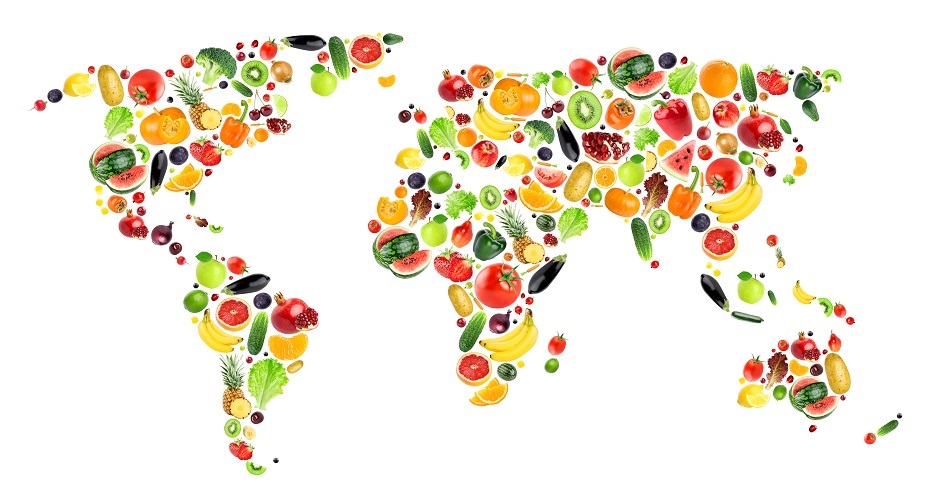Why The Future of Food Depends on Location Intelligence
Chew on this for a moment. Take out your smart device, unlock your screen, and scroll through your apps. How many food specific applications are installed?
From Foodpanda to Eatigo, companies are cropping up around the world to serve shoppers and potential customers instantly, efficiently, and directly. The food industry has always driven technological innovation, from early civilizations cultivating farms to the British Agricultural Revolution to the microwave oven. Today’s connected and on-the-go shopper have even more demands and higher expectations than shoppers of the past. And there is one ingredient that the future of grocery and meal delivery services greatly depends on: location intelligence.
Increasing demand for faster, more accurate delivery.
Instacart, a same day grocery delivery service, estimates that as early as 2018, 80% of American homes will use a food delivery service provider for daily meals. New food retailers are all aggressively competing for their piece of the market, with big weights Amazon and Walmart close behind.
One challenge facing the $5 billion food retail industry is fulfilling the promise of completing each and every delivery as fast and as accurate as possible. Instacart recently published a series of choropleth data visualizations that display the amount of deliveries the organization satisfies over seven days, by analyzing GPS generated location data for orders spanning from Boston, MA to San Diego, CA, and many other locations in between.
By visualizing its location data, Instacart was able to improve operations, generate new hypotheses to test for improving sales, provide rationale for infrastructure changes, and identify best practices.
Food delivery services, like Instacart, will also have to tackle the vehicle routing problem. They need to know “What is the optimal set of routes for a fleet of vehicles to traverse in order to deliver to a given set of customers?” And the answer to that questions relies on a deep understanding of location data and location intelligence.
Identifying customer segments for emerging food delivery product lines and services.
According to a recent Nielsen consumer report, meal delivery services in the US totaled $80.6 million in consumer spending by the end of 2016, up 6.7% from the previous year. The survey data indicates a highly segmented market for meal delivery enterprises, with an increasing demand from millennial men, families with children living at home, and households that earn above $70,000 annually.
To target the vastly disparate and chaotic schedules of many consumers, visualizing customer segmentation data by region, state, municipality, or by neighbourhood block could be the analysis that a venture looking to make some dough in this billion dollar industry needs.
In the example below, Carto started by importing census tracts for the city of San Francisco, then enriched those areas with Spielman-Singleton segments, a popular population segmentation method, as well as income and age data (seen using the widgets adjacent to the map). If a company like Blue Apron were looking to serve millennial households that earn above $70,000 annually, they’ll need to use a location intelligence application like the one below to explore and identify customer segments.
When it comes to food delivery demand, understanding shoppers behavior can be instructive for food retailers and suppliers alike. Charting customer demographics and segmentation with location intelligence allows for no location data byte to go cold and untouched, and keeps an increasingly hassle-intolerant consumer market from getting hangry (hungry + angry)!
Using GPS data to improve agriculture.
Food retail innovation isn’t just permeating through handheld devices. Farming hardware, like tractors and irrigation structures, collect location data via GPS satellite as a standard industry practice, to monitor soil, water and mineral density, temperature, and crop yield.
The adoption of data analysis and location intelligence to assess and analyze processes and operations makes for a smart agriculture market. Precision farming applications are expected to grow from a $5.18 billion industry in 2016, to $11.23 billion by 2022. It is estimated that the average farmer collects about four million data points per year. The more technology-driven data analysis acquired from the fields has the potential to increase crop productivity, improve quality of food, and quantity. Location intelligence enables farmers and agriculturalists to easily digest and maximize field performance down to the square meter.
Dining on Location Intelligence
As more companies sprout up to joust in stadium kitchen, the industry will continue to face challenges like distribution, routing, and addressing the talent gap. Whichever organization to impact and embrace rapidly cycling and shifting consumer food and mobility trends will dominate food in the future, whether in retail, gastronomy, or production.
But for right now, the recipe for success appears fairly straight-forward: put your business in the palm of the shopper, aggregate location data, derive insights from data visualizations, then execute and communicate brand messaging that arrives to the hungry customer just in time.
If your business is looking to the stir the pot and break ground, or bread, in this emergent industry, it might be time to consider a really good guide to location inteligence implementation for starters.
Lava is an authorised reseller of CARTO, a location intelligence tool that analyses and visualizes complex and large amounts of data.


